Synergism of Synthetic Sulfonamides and Natural Antioxidants for the Management of Diabetes Mellitus Associated with Oxidative Stress
Abstract
1. Introduction
2. Diabetes Mellitus Associated with Oxidative Stress
2.1. Pathophysiological Mechanisms of T2DM and Oxidative Stress
2.1.1. Insulin Resistance
2.1.2. Pancreatic β-Cell Dysfunction
2.2. Sulfonamide Derivatives: Compounds with Antidiabetic and Antioxidant Potency
| SU (General Chemical Structure) | Generations of Sulfonamide Derivatives | Radical | Studies on Antidiabetic Activity | Studies on Antioxidant Activity | |
|---|---|---|---|---|---|
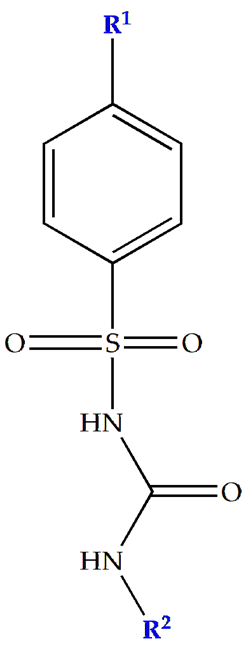 | R1 | R2 | |||
| First Generation | |||||
| Tolbutamide |  |  | [98] | [87,99] | |
| Tolazamide |  | 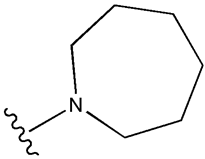 | [100] | Not found | |
| Chlorpropamide |  |  | [101] | [102] | |
| Acetohexamide | 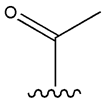 | 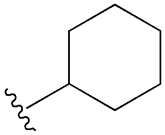 | [103] | Not found | |
| Second Generation | |||||
| Gliburide (sau glibenclamide) |  | 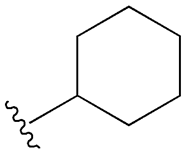 | [104,105] | [106,107] | |
| Glipizide | 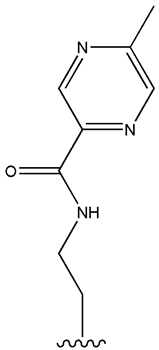 | 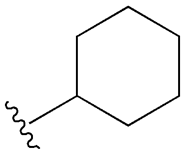 | [108] | [109,110] | |
| Gliclazide |  | 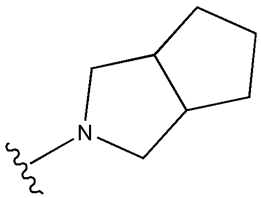 | [111] | [112,113,114] | |
| Third Generation | |||||
| Glimepiride | 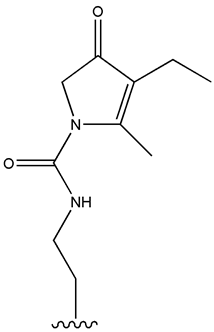 | 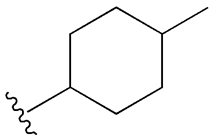 | [115] | [116] | |
2.3. Pharmacological Synergies Between Sulfonamide Compounds and Other Pharmacological Agents for the Treatment of DZT2 Associated with OS
| Therapeutic Combination | Synergistic Effects | Test Performed | General Results | References | |
|---|---|---|---|---|---|
| SU | Antioxidant/ Antidiabetic | ||||
| SU and antioxidants | |||||
| Gliclazide 10 mg/kg | Quercetin 50 mg/kg | Immunohistochemical results: restored β-cells number and insulin immunoreactivity to normal values. Morphometric results: normalized number (synergistic effect, p < 0.05), area (additive effect, p < 0.05) and perimeter (additive effect, p < 0.05) in pancreatic islets and beta cells (synergistic effect, p < 0.05) | In vivo study diabetic rats | augmented serum superoxide dismutase and reduced glutathione more than gliclazide alone | [123] |
| Gliclazide 15 mg/kg | Alpha lipoic acid (ALA) 60 mg/kg | Effects on body weight, blood glucose level and pancreas structure: normoglycemia was maintained in comparison with healthy control animals (p < 0.05) Effects on inflammation, cardiac oxidative stress and fibrosis: decreased plasma and cardiac MDA, increased cardiac content of the antioxidant enzymes GSH and SOD activity, decreased levels of pro-inflammatory cytokines (TNF-α, IL-1β and IL-6). Substantial inhibition of the TGF-β1/Smad2 and 3 signaling pathway after 6 weeks treatment (p < 0.05). | In vivo study 44 male Sprague Dawley rats | Increases insulin sensitivity, reduces diabetic neuropathy | [126] |
| Gliclazide 15 mg/kg | Alpha lipoic acid (ALA) 60 mg/kg | Supplementation with ALA reduced apoptosis by 6% and restored cell viability to a level comparable to the healthy control (HC) group, while gliclazide further reduced cell viability and significantly increased apoptosis by 29% compared to the HC group (p > 0.05). Supplementation with ALA preserved hepatic integrity against inflammation and apoptosis (p < 0.001). | Preclinic In vivo study | Suppression of inflammation and apoptosis by activating the antioxidant pathway in the diabetic liver | [127] |
| Gliclazide 2.5/5.6/11.2 mg/kg | Resveratrol 50/100/200 mg/kg | This combined therapy significantly enhanced the mean percent blood glucose reduction at the 4th h in both normal (44.44% ± 1.09%) and diabetic rats (52.67% ± 0.32%) without biphasic hypoglycemia. In both single and multiple dose combinations, co-administration of gliclazide with resveratrol resulted in significant increases to pharmacokinetic parameters, such as AUC (Area under serum concentration/time), Cmax (Peak serum concentration), and t1/2 (Terminal half life), while reducing Clearance (CL), Vd (Volume of distribution), and Vdss compared to gliclazide alone. | In vivo study albino rabbits and adult male albino Wistar rats | substantial changes in blood glucose reduction in normal rats, diabetic rats, and normal rabbits | [128] |
| Glibenclamide 600 μg/kg | Honey 1.0 g/kg/day | No significant differences in the activities of SOD, GSH in pancreas of normal and STZ-treated rats. Only Glibenclamide did not increase CAT activity in diabetic rats, but glibenclamide in combination with honey showed significantly (p ≤ 0.016) increased CAT and (p ≤ 0.016) reduced GPx activity. | In vivo study rats | Blood glucose was reduced reduced activity of catalase increased activities of superoxide dismutase and glutathione peroxidase | [129] |
| Glibenclamide 5 mg/day | Sesame oil 35 g/day | Antihyperglicemic effect: combination therapy showed 36% reduction of glucose (p < 0.001 vs. before treatment, p < 0.01 vs. sesame oil monotherapy, p < 0.05 vs. glibenclamide monotherapy) and 3% reduction of HbA1c (p < 0.001 vs. before treatment, p < 0.01 vs. sesame oil monotherapy, p < 0.05 vs. glibenclamide monotherapy) | In vivo study 60 diabetic patients, underwent combination therapy | Decreases lipid peroxidation, protects pancreatic β-cells | [130] |
| Glimepiride 0.1 mg/kg | Naringin 100 mg/kg | Combination therapy significantly restores the creatinine levels and urine volumes, SGOT (serum glutamate oxaloacetate transaminase), SGPT (erum glutamate pyruvatetransaminase), and ALP when compared to a single dose of administration (p < 0.001). The following biochemical parameters TC (total cholesterol), LDL, TG and HDL, as well as CAT, GSH, SOD endogenous antioxidant enzymes, were significantly returned to normal levels. | In vivo study Wistar rats | Lipid normalization Lower blood sugar Increased antioxidant enzymes | [131] |
| Glimepiride 1 mg/kg | Curcumin 80 mg/kg | In diabetic rats: increased all the pharmacokinetic parameters including Cmax (by 1.37 times), AUC (by 1.16 times), t1/2 (by 1.68 times) and MRT (Average mean residence time—by 1.29 times), decreased the CL (by 0.68 times), Vd (by 0.61 times) markedly as compared to control group. | In vivo study Male Albino rats of Wistar | Decreases glucose levels and systemic inflammation | [132] |
| Glipizide 15 mg/day | Aralia root bark extract (ARBE) 2.7 g/day | Compared with the glipizide group, the combination group had significant decreases levels of HbA1c (p = 0.06), TC (r = 0.32; p = 0.006) and LDL-C (r = 0.34; p = 0.005). | 148 patients treated for 8 weeks | decrease in HbA1c and LDL-C levels | [133] |
| Other SU combinations | |||||
| Glibenclamide 10 mg/day | Metformin (Glucovance, producer Merck Serono) 1000 mg/day | Serum concentration of AGE (Advanced Glycation Products), AOPP (Advanced Oxidation Protein Product), MDA and Ox-LDL (Oxidized Low-Density Lipoprotei) decreased significantly (p < 0.001) compared to baseline. Enzymatic activities of CAT, FRAP, GPX, and SOD increased significantly (p < 0.001). Increased HbA1c compared to metformin group (7.5 ± 1.7 vs. 6.8 ± 0.9, p = 0.010) | In vivo study 95 patients | Reduction of OS markers (MDA, LDL), increase in antioxidant enzymes SOD, CAT, and GPx. | [134] |
| Glipizide 2.5 mg/kg | Metformin (Metaglip, producer Bristol-Myers Squibb) 60 mg/kg | Compared to the untreated DM group, FBG and HbA1c were significantly reduced in the DM groups (p < 0.01) treated with metformin (159.7 mg/dL and 6.7%), glipizide (184.3 mg/dL and 7.3%) and dual therapy (118 mg/dL and 5.2%). Dual therapy decreased LPO, NO and urea levels but increased TAC in diabetic rats more than glipizide. | In vivo study 30 Sprague Dawley rats male | Lipid peroxidation and NO levels decreased, while TPAC increased. | [83] |
| Gliclazide 80 mg | Metformin (Claformin, producer Orchid Pharma) 500 mg | Monotherapy with metformin showed significantly lower levels of FBG [7.61 (6.70–8.89) mmol/L vs. 9.00 (7.30–10.68) mmol/L; p = 0.022] and HBA1c [7.00 (6.40–7.65)% vs. 8.20 (7.20–9.75)%; p < 0.001] compared with dual therapy. | In vivo study 80 patients, only 40 underwent combination therapy | Decrease in HbA1c, increase in TPAC | [135] |
| Glimepiride 0.2 mg/kg | Pioglitazone (thiazolidinedione) 1 mg/kg | This dual therapy did not protect from nuclear damage and sperm abnormalities in NA-STZ diabetes compared to the combination of metformin and pioglitazone. | In vivo study Wistar rats male | Reduction in LPO Increase in enzyme production (CAT and SOD) Reduction of OS and hyperglycemia | [136] |
| Glimepiride 1 mg | Dapaglifozina 10 mg + clorhidrat de metformin 1000 mg | 12 week: The reduction in HbA1c from baseline was statistically significant with the triple therapy as compared to dual therapy (glimepiride and metformin) (mean ±SD: −1.37% ± 0.93% vs. −1.01% ± 0.79%; p < 0.0001) 28 week: the reduction of HbA1c was comparable between the two types of therapies (−2.08 ± 1.06% vs. −1.80% ± 1.07%, p = 0.4943) | In vivo study randomized phase III clinical trial | Reduction in HbA1c Decreases of ROS and NOX4 | [137] |
| Gliclazide 10 mg/kg | Atorvastatin 10 mg/kg | Combination treatment enhanced sperm morphology and improved testicular structure (p < 0.05) while did not affect sperm count (p > 0.05). | In vivo study Sprague-Dawley rats male | Increased antidiabetic properties Independent antioxidant properties Gliclazide decreases NADPH oxidase Atorvastatin activates CAT and induces NFR2/GPX4 | [138] |
3. Conclusions and Perspectives
Author Contributions
Funding
Data Availability Statement
Conflicts of Interest
Abbreviations
| DM | Diabet Mellitus |
| T1DM | Type one Diabet Mellitus |
| T2DM | Type two Diabet Mellitus |
| OS | Oxidative Stress |
| ROS | Reactive Oxygen Species |
| RNS | Reactive Azote Species |
| LP | Lipid peroxidation |
| PG | Protein glycosylation |
| TZD | Thiazolidinedione |
| DPP-4 | Dipeptidyl peptidase-4 inhibitor |
| SGLT-2 | Sodium-Glucose Transport Protein 2 Inhibitors |
| GLP-1 | Glucagon-like peptide-1 |
| AGEs | Advanced glycation end products |
| PKC | Protein kinase C |
| MDA | Malondialdehyde |
| GSH/GSSG | Glutathione peroxidase |
| SOD | Superoxide dismutase |
| CAT | Catalase |
| NADPH | Nicotinamide adenine dinucleotide phosphate oxidase |
| SU | Sulfonylurea |
| HgA1c | Glycosylated hemoglobin |
| SUR | Sulfonylurea receptor |
| OGTT | Oral glucose tolerance test |
| ITT | Insulin tolerance test |
| DPPH | 2,2-diphenyl-1-picrylhydrazyl |
| FRAP | Ferric reducing antioxidant power |
| ORAC | Oxygen radical absorbance capacity |
| ABTS | 2,2′-azinobis(3-ethylbenzothiazoline-6-sulfonic acid) |
| TPAC | Total plasma antioxidant capacity |
| LDL | Low-density lipoprotein |
| HDL | High-density lipoprotein |
| NO | Nitric oxide |
| FBG | Fasting blood glucose |
| PPG | Postprandial blood glucose |
| GPx | Glutathione peroxidase |
| ATP | Adenosine Triphosphate |
| IRS-1 | Insulin Receptor Substrate-1 |
| ER | Endoplasmic Reticulum |
| NF-kB | kappa B Nuclear Factor |
| UPR | Unfolded Protein Response |
References
- Magliano, D.; Boyko, E.J. IDF Diabetes Atlas, 10th ed.; International Diabetes Federation: Brussels, Belgium, 2021; ISBN 978-2-930229-98-0. [Google Scholar]
- Antar, S.A.; Ashour, N.A.; Sharaky, M.; Khattab, M.; Ashour, N.A.; Zaid, R.T.; Roh, E.J.; Elkamhawy, A.; Al-Karmalawy, A.A. Diabetes Mellitus: Classification, Mediators, and Complications; A Gate to Identify Potential Targets for the Development of New Effective Treatments. Biomed. Pharmacother. 2023, 168, 115734. [Google Scholar] [CrossRef]
- Lu, X.; Xie, Q.; Pan, X.; Zhang, R.; Zhang, X.; Peng, G.; Zhang, Y.; Shen, S.; Tong, N. Type 2 Diabetes Mellitus in Adults: Pathogenesis, Prevention and Therapy. Signal Transduct. Target. Ther. 2024, 9, 262. [Google Scholar] [CrossRef] [PubMed]
- Saeedi, P.; Petersohn, I.; Salpea, P.; Malanda, B.; Karuranga, S.; Unwin, N.; Colagiuri, S.; Guariguata, L.; Motala, A.A.; Ogurtsova, K.; et al. Global and Regional Diabetes Prevalence Estimates for 2019 and Projections for 2030 and 2045: Results from the International Diabetes Federation Diabetes Atlas, 9th Edition. Diabetes Res. Clin. Pract. 2019, 157, 107843. [Google Scholar] [CrossRef] [PubMed]
- Ismail, L.; Materwala, H.; Al Kaabi, J. Association of Risk Factors with Type 2 Diabetes: A Systematic Review. Comput. Struct. Biotechnol. J. 2021, 19, 1759–1785. [Google Scholar] [CrossRef] [PubMed]
- Borén, J.; Öörni, K.; Catapano, A.L. The Link between Diabetes and Cardiovascular Disease. Atherosclerosis 2024, 394, 117607. [Google Scholar] [CrossRef]
- Savelieff, M.G.; Elafros, M.A.; Viswanathan, V.; Jensen, T.S.; Bennett, D.L.; Feldman, E.L. The Global and Regional Burden of Diabetic Peripheral Neuropathy. Nat. Rev. Neurol. 2025, 21, 17–31. [Google Scholar] [CrossRef]
- Yang, Y.; Zhao, B.; Wang, Y.; Lan, H.; Liu, X.; Hu, Y.; Cao, P. Diabetic Neuropathy: Cutting-Edge Research and Future Directions. Signal Transduct. Target. Ther. 2025, 10, 132. [Google Scholar] [CrossRef]
- Aboelmaaty, M.; Ak, H.E.; Gaddam, N.; Aqueel, M.; Ahmed, M.; Mirza, M.S.S.; Ahmed, K. Complications of Diabetes: Cardiovascular, Renal, and Neurological Implications. J. Adv. Med. Med. Res. 2025, 37, 103–112. [Google Scholar] [CrossRef]
- Liu, X.; Zhou, J.; Liu, C.; Li, Z. Efficacy and Incidence of Complications of Hemodialysis in the Treatment of Diabetic Nephropathy: A Systematic Review and Meta-Analysis. Syst. Rev. 2025, 14, 129. [Google Scholar] [CrossRef]
- Sattaru, K.; Madhu, M.T.; Singh, J.K.; Kandi, V.; Gupta, A.; Ca, J.; Balaji, O.; Sridhar, N.; Talla, V. A Comprehensive Review of the Effects of Diabetes Mellitus on the Gastrointestinal System. Cureus 2025, 17, e77845. [Google Scholar] [CrossRef]
- Ojo, O.A.; Soyinka, T.; Ezenabor, E.H.; Ojo, A.B. The Relationships between the Biochemical Processes of Diabetes and Urinary and Genital Tract Alterations. In Type 1 Diabetes—Causes, Treatments and Management; IntechOpen: London, UK, 2025. [Google Scholar] [CrossRef]
- Masharipov, S. Opportunistic Infections in Patients with Diabetes Mellitus. West. Eur. J. Mod. Exp. Sci. Methods 2025, 3, 43–47. [Google Scholar]
- Anunitha, R.; Sangeetha, T.; Shasirekha, C. Linking Diabetic Retinopathy with Foot Ulcer Severity among Diabetic Patients. Bioinformation 2025, 21, 1007–1010. [Google Scholar] [CrossRef] [PubMed]
- Zhang, Y.; Chen, G.; Lv, S.; Wang, W.; Jing, Y. The Association between the AST/ALT Ratio and Osteopenia or Osteoporosis in Patients with Type 2 Diabetes Mellitus. Endocr. Connect. 2025, 14, e250086. [Google Scholar] [CrossRef]
- Basharat, Z.; Hussain, M. Molecular Detection of Staphylococcus Aureus in Skin and Soft Tissue Infections Among Diabetic Patients. Insights-J. Life Soc. Sci. 2025, 3, 296–303. [Google Scholar] [CrossRef]
- Zhu, B.; Qu, S. The Relationship Between Diabetes Mellitus and Cancers and Its Underlying Mechanisms. Front. Endocrinol. 2022, 13, 800995. [Google Scholar] [CrossRef] [PubMed]
- García-Compeán, D.; Orsi, E.; Kumar, R.; Gundling, F.; Nishida, T.; Villarreal-Pérez, J.Z.; Cueto-Aguilera, Á.N.D.; González-González, J.A.; Pugliese, G. Clinical Implications of Diabetes in Chronic Liver Disease: Diagnosis, Outcomes and Management, Current and Future Perspectives. WJG 2022, 28, 775–793. [Google Scholar] [CrossRef]
- Ongko, D.P.; Chuan, H.K.; Halim, S. The Two Way Relationship between Diabetes Mellitus and Periodontal Disease. J. Prima Med. Sains 2025, 7, 61–65. [Google Scholar]
- Li, Y.; Pan, A.-P.; Yu, A.-Y. Recent Progression of Pathogenesis and Treatment for Diabetic Cataracts. Semin Ophthalmol. 2024, 40, 275–282. [Google Scholar] [CrossRef]
- Tiwary, N.; Sharma, N.; Singh, S.; Behl, T.; Zahoor, I. Understanding the Pharmacological and Nanotechnological Facets of Dipeptidyl Peptidase-4 Inhibitors in Type II Diabetes Mellitus: A Paradigm in Therapeutics. BioNanoScience 2024, 14, 211–229. [Google Scholar] [CrossRef]
- Nabi, A.H.M.N.; Ebihara, A.; Shekhar, H.U. Impacts of SARS-CoV-2 on Diabetes Mellitus: A Pre and Post Pandemic Evaluation. World J. Virol. 2023, 12, 151–171. [Google Scholar] [CrossRef]
- Caturano, A.; D’Angelo, M.; Mormone, A.; Russo, V.; Mollica, M.P.; Salvatore, T.; Galiero, R.; Rinaldi, L.; Vetrano, E.; Marfella, R.; et al. Oxidative Stress in Type 2 Diabetes: Impacts from Pathogenesis to Lifestyle Modifications. Curr. Issues Mol. Biol. 2023, 45, 6651–6666. [Google Scholar] [CrossRef]
- Wronka, M.; Krzemińska, J.; Młynarska, E.; Rysz, J.; Franczyk, B. The Influence of Lifestyle and Treatment on Oxidative Stress and Inflammation in Diabetes. Int. J. Mol. Sci. 2022, 23, 15743. [Google Scholar] [CrossRef]
- Caturano, A.; Rocco, M.; Tagliaferri, G.; Piacevole, A.; Nilo, D.; Di Lorenzo, G.; Iadicicco, I.; Donnarumma, M.; Galiero, R.; Acierno, C. Oxidative Stress and Cardiovascular Complications in Type 2 Diabetes: From Pathophysiology to Lifestyle Modifications. Antioxidants 2025, 14, 72. [Google Scholar] [CrossRef]
- Rajlic, S.; Treede, H.; Münzel, T.; Daiber, A.; Duerr, G.D. Early Detection Is the Best Prevention—Characterization of Oxidative Stress in Diabetes Mellitus and Its Consequences on the Cardiovascular System. Cells 2023, 12, 583. [Google Scholar] [CrossRef] [PubMed]
- Bhatti, J.S.; Sehrawat, A.; Mishra, J.; Sidhu, I.S.; Navik, U.; Khullar, N.; Kumar, S.; Bhatti, G.K.; Reddy, P.H. Oxidative Stress in the Pathophysiology of Type 2 Diabetes and Related Complications: Current Therapeutics Strategies and Future Perspectives. Free Radic. Biol. Med. 2022, 184, 114–134. [Google Scholar] [CrossRef] [PubMed]
- Gieroba, B.; Kryska, A.; Sroka-Bartnicka, A. Type 2 Diabetes Mellitus—Conventional Therapies and Future Perspectives in Innovative Treatment. Biochem. Biophys. Rep. 2025, 42, 102037. [Google Scholar] [CrossRef] [PubMed]
- Huang, J.; Yeung, A.M.; Armstrong, D.G.; Battarbee, A.N.; Cuadros, J.; Espinoza, J.C.; Kleinberg, S.; Mathioudakis, N.; Swerdlow, M.A.; Klonoff, D.C. Artificial Intelligence for Predicting and Diagnosing Complications of Diabetes. J. Diabetes Sci. Technol. 2023, 17, 224–238. [Google Scholar] [CrossRef]
- Feingold, K.R. Oral and Injectable (Non-Insulin) Pharmacological Agents for the Treatment of Type 2 Diabetes. In Endotext; MDText.com, Inc.: South Dartmouth, MA, USA, 2024. [Google Scholar]
- Padhi, S.; Nayak, A.K.; Behera, A. Type II Diabetes Mellitus: A Review on Recent Drug Based Therapeutics. Biomed. Pharmacother. 2020, 131, 110708. [Google Scholar] [CrossRef]
- Blahova, J.; Martiniakova, M.; Babikova, M.; Kovacova, V.; Mondockova, V.; Omelka, R. Pharmaceutical Drugs and Natural Therapeutic Products for the Treatment of Type 2 Diabetes Mellitus. Pharmaceuticals 2021, 14, 806. [Google Scholar] [CrossRef]
- Rajendiran, D.; Packirisamy, S.; Gunasekaran, K. A Review on Role of Antioxidants in Diabetes. Asian J. Pharm. Clin. Res. 2018, 11, 48. [Google Scholar] [CrossRef]
- Scheen, A.J. Sulphonylureas in the Management of Type 2 Diabetes: To Be or Not to Be? Diabetes Epidemiol. Manag. 2021, 1, 100002. [Google Scholar] [CrossRef]
- Fatima, M.T.; Bhat, A.A.; Nisar, S.; Fakhro, K.A.; Al-Shabeeb Akil, A.S. The Role of Dietary Antioxidants in Type 2 Diabetes and Neurodegenerative Disorders: An Assessment of the Benefit Profile. Heliyon 2023, 9, e12698. [Google Scholar] [CrossRef] [PubMed]
- Guo, H.; Wu, H.; Li, Z. The Pathogenesis of Diabetes. Int. J. Mol. Sci. 2023, 24, 6978. [Google Scholar] [CrossRef] [PubMed]
- Son, J.; Accili, D. Reversing Pancreatic β-Cell Dedifferentiation in the Treatment of Type 2 Diabetes. Exp. Mol. Med. 2023, 55, 1652–1658. [Google Scholar] [CrossRef]
- Ojo, O.A.; Ibrahim, H.S.; Rotimi, D.E.; Ogunlakin, A.D.; Ojo, A.B. Diabetes Mellitus: From Molecular Mechanism to Pathophysiology and Pharmacology. Med. Nov. Technol. Devices 2023, 19, 100247. [Google Scholar] [CrossRef]
- Ogawa, W.; Araki, E.; Ishigaki, Y.; Hirota, Y.; Maegawa, H.; Yamauchi, T.; Yorifuji, T.; Katagiri, H. New Classification and Diagnostic Criteria for Insulin Resistance Syndrome. Endocr. J. 2022, 69, 107–113. [Google Scholar] [CrossRef]
- Nolan, C.J.; Prentki, M. Insulin Resistance and Insulin Hypersecretion in the Metabolic Syndrome and Type 2 Diabetes: Time for a Conceptual Framework Shift. Diabetes Vasc. Dis. Res. 2019, 16, 118–127. [Google Scholar] [CrossRef]
- Hurrle, S.; Hsu, W.H. The Etiology of Oxidative Stress in Insulin Resistance. Biomed. J. 2017, 40, 257–262. [Google Scholar] [CrossRef]
- Masenga, S.K.; Kabwe, L.S.; Chakulya, M.; Kirabo, A. Mechanisms of Oxidative Stress in Metabolic Syndrome. Int. J. Mol. Sci. 2023, 24, 7898. [Google Scholar] [CrossRef]
- Andreadi, A.; Bellia, A.; Di Daniele, N.; Meloni, M.; Lauro, R.; Della-Morte, D.; Lauro, D. The Molecular Link between Oxidative Stress, Insulin Resistance, and Type 2 Diabetes: A Target for New Therapies against Cardiovascular Diseases. Curr. Opin. Pharmacol. 2022, 62, 85–96. [Google Scholar] [CrossRef]
- Bothou, C.; Beuschlein, F.; Spyroglou, A. Links between Aldosterone Excess and Metabolic Complications: A Comprehensive Review. Diabetes Metab. 2020, 46, 1–7. [Google Scholar] [CrossRef]
- Samuel, V.T.; Shulman, G.I. The Pathogenesis of Insulin Resistance: Integrating Signaling Pathways and Substrate Flux. J. Clin. Investig. 2016, 126, 12–22. [Google Scholar] [CrossRef] [PubMed]
- Saisho, Y. β-Cell Dysfunction: Its Critical Role in Prevention and Management of Type 2 Diabetes. World J. Diabetes 2015, 6, 109. [Google Scholar] [CrossRef] [PubMed]
- Cui, D.; Feng, X.; Lei, S.; Zhang, H.; Hu, W.; Yang, S.; Yu, X.; Su, Z. Pancreatic β-Cell Failure, Clinical Implications, and Therapeutic Strategies in Type 2 Diabetes. Chin. Med. J. 2024, 137, 791–805. [Google Scholar] [CrossRef] [PubMed]
- Hong, Y.; Boiti, A.; Vallone, D.; Foulkes, N.S. Reactive Oxygen Species Signaling and Oxidative Stress: Transcriptional Regulation and Evolution. Antioxidants 2024, 13, 312. [Google Scholar] [CrossRef]
- Veluthakal, R.; Esparza, D.; Hoolachan, J.M.; Balakrishnan, R.; Ahn, M.; Oh, E.; Jayasena, C.S.; Thurmond, D.C. Mitochondrial Dysfunction, Oxidative Stress, and Inter-Organ Miscommunications in T2D Progression. Int. J. Mol. Sci. 2024, 25, 1504. [Google Scholar] [CrossRef]
- Mahmoud, A.M.; Wilkinson, F.L.; Sandhu, M.A.; Lightfoot, A.P. The Interplay of Oxidative Stress and Inflammation: Mechanistic Insights and Therapeutic Potential of Antioxidants. Oxidative Med. Cell. Longev. 2021, 2021, 9851914. [Google Scholar] [CrossRef]
- Ong, G.; Logue, S.E. Unfolding the Interactions between Endoplasmic Reticulum Stress and Oxidative Stress. Antioxidants 2023, 12, 981. [Google Scholar] [CrossRef]
- Park, I.R.; Chung, Y.G.; Won, K.C. Overcoming β-Cell Dysfunction in Type 2 Diabetes Mellitus: CD36 Inhibition and Antioxidant System. Diabetes Metab. J. 2025, 49, 1–12. [Google Scholar] [CrossRef]
- Eguchi, N.; Vaziri, N.D.; Dafoe, D.C.; Ichii, H. The Role of Oxidative Stress in Pancreatic β Cell Dysfunction in Diabetes. Int. J. Mol. Sci. 2021, 22, 1509. [Google Scholar] [CrossRef]
- Dinić, S.; Arambašić Jovanović, J.; Uskoković, A.; Mihailović, M.; Grdović, N.; Tolić, A.; Rajić, J.; Đorđević, M.; Vidaković, M. Oxidative Stress-Mediated Beta Cell Death and Dysfunction as a Target for Diabetes Management. Front. Endocrinol. 2022, 13, 1006376. [Google Scholar] [CrossRef]
- Galli, A.; Marciani, P.; Marku, A.; Ghislanzoni, S.; Bertuzzi, F.; Rossi, R.; Di Giancamillo, A.; Castagna, M.; Perego, C. Verbascoside Protects Pancreatic β-Cells against ER-Stress. Biomedicines 2020, 8, 582. [Google Scholar] [CrossRef]
- Marrano, N.; Spagnuolo, R.; Biondi, G.; Cignarelli, A.; Perrini, S.; Vincenti, L.; Laviola, L.; Giorgino, F.; Natalicchio, A. Effects of Extra Virgin Olive Oil Polyphenols on Beta-Cell Function and Survival. Plants 2021, 10, 286. [Google Scholar] [CrossRef]
- Santangelo, C.; Filesi, C.; Varì, R.; Scazzocchio, B.; Filardi, T.; Fogliano, V.; D’Archivio, M.; Giovannini, C.; Lenzi, A.; Morano, S.; et al. Consumption of Extra-Virgin Olive Oil Rich in Phenolic Compounds Improves Metabolic Control in Patients with Type 2 Diabetes Mellitus: A Possible Involvement of Reduced Levels of Circulating Visfatin. J. Endocrinol. Investig. 2016, 39, 1295–1301. [Google Scholar] [CrossRef] [PubMed]
- Yang, T.; Qi, F.; Guo, F.; Shao, M.; Song, Y.; Ren, G.; Linlin, Z.; Qin, G.; Zhao, Y. An Update on Chronic Complications of Diabetes Mellitus: From Molecular Mechanisms to Therapeutic Strategies with a Focus on Metabolic Memory. Mol. Med. 2024, 30, 71. [Google Scholar] [CrossRef] [PubMed]
- Tomic, D.; Shaw, J.E.; Magliano, D.J. The Burden and Risks of Emerging Complications of Diabetes Mellitus. Nat. Rev. Endocrinol. 2022, 18, 525–539. [Google Scholar] [CrossRef] [PubMed]
- Mishra, S.; Tiwari, P.; Yadav, R.; Patel, P.S. An Extensive Analysis of Diseases Associated with Diabetes: Review Article. J. Pharma Insights Res. 2024, 2, 174–187. [Google Scholar] [CrossRef]
- Dong, H.; Sun, Y.; Nie, L.; Cui, A.; Zhao, P.; Leung, W.K.; Wang, Q. Metabolic Memory: Mechanisms and Diseases. Signal Transduct. Target. Ther. 2024, 9, 38. [Google Scholar] [CrossRef]
- Negera, G.Z.; Weldegebriel, B.; Fekadu, G. Acute Complications of Diabetes and Its Predictors among Adult Diabetic Patients at Jimma Medical Center, Southwest Ethiopia. Diabetes Metab. Syndr. Obes. 2020, 13, 1237–1242. [Google Scholar] [CrossRef]
- Bielska, A.; Niemira, M.; Kretowski, A. Recent Highlights of Research on miRNAs as Early Potential Biomarkers for Cardiovascular Complications of Type 2 Diabetes Mellitus. Int. J. Mol. Sci. 2021, 22, 3153. [Google Scholar] [CrossRef]
- Mauricio, D.; Alonso, N.; Gratacòs, M. Chronic Diabetes Complications: The Need to Move beyond Classical Concepts. Trends Endocrinol. Metab. 2020, 31, 287–295. [Google Scholar] [CrossRef]
- Ighodaro, O.M. Molecular Pathways Associated with Oxidative Stress in Diabetes Mellitus. Biomed. Pharmacother. 2018, 108, 656–662. [Google Scholar] [CrossRef]
- An, Y.; Xu, B.; Wan, S.; Ma, X.; Long, Y.; Xu, Y.; Jiang, Z. The Role of Oxidative Stress in Diabetes Mellitus-Induced Vascular Endothelial Dysfunction. Cardiovasc. Diabetol. 2023, 22, 237. [Google Scholar] [CrossRef]
- Rais, N.; Ved, A.; Ahmad, R.; Parveen, A. Oxidative Stress and Diabetes Mellitus: Unravelling the Intricate Connection: A Comprehensive Review. J. Pharm. Res. Int. 2024, 36, 13–30. [Google Scholar] [CrossRef]
- Goycheva, P.; Petkova-Parlapanska, K.; Georgieva, E.; Karamalakova, Y.; Nikolova, G. Biomarkers of Oxidative Stress in Diabetes Mellitus with Diabetic Nephropathy Complications. Int. J. Mol. Sci. 2023, 24, 13541. [Google Scholar] [CrossRef] [PubMed]
- Chen, X.; Xie, N.; Feng, L.; Huang, Y.; Wu, Y.; Zhu, H.; Tang, J.; Zhang, Y. Oxidative Stress in Diabetes Mellitus and Its Complications: From Pathophysiology to Therapeutic Strategies. Chin. Med. J. 2025, 138, 15–27. [Google Scholar] [CrossRef] [PubMed]
- Dawi, J.; Misakyan, Y.; Affa, S.; Kades, S.; Narasimhan, A.; Hajjar, F.; Besser, M.; Tumanyan, K.; Venketaraman, V. Oxidative Stress, Glutathione Insufficiency, and Inflammatory Pathways in Type 2 Diabetes Mellitus: Implications for Therapeutic Interventions. Biomedicines 2024, 13, 18. [Google Scholar] [CrossRef] [PubMed]
- Osman, A.A.M.; Seres-Bokor, A.; Ducza, E. Diabetes Mellitus Therapy in the Light of Oxidative Stress and Cardiovascular Complications. J. Diabetes Its Complicat. 2025, 39, 108941. [Google Scholar] [CrossRef]
- Yu, M. The Place of Sulfonylureas in the Evolving Landscape of Combination Therapy. Diabetes Ther. 2020, 11, 23–28. [Google Scholar] [CrossRef]
- Das, A.K.; Saboo, B.; Chawla, R.; Aravind, S.R.; Rajput, R.; Singh, A.K.; Mukherjee, J.J.; Jhingan, A.; Shah, P.; Deshmukh, V.; et al. Time to Reposition Sulfonylureas in Type 2 Diabetes Management in Indian Context: A Pragmatic Practical Approach. Int. J. Diabetes Dev. Ctries. 2023, 43, 856–874. [Google Scholar] [CrossRef]
- Van Dalem, J.; Brouwers, M.C.G.J.; Stehouwer, C.D.A.; Krings, A.; Leufkens, H.G.M.; Driessen, J.H.M.; De Vries, F.; Burden, A.M. Risk of Hypoglycaemia in Users of Sulphonylureas Compared with Metformin in Relation to Renal Function and Sulphonylurea Metabolite Group: Population Based Cohort Study. BMJ 2016, 354, i3625. [Google Scholar] [CrossRef] [PubMed][Green Version]
- Casanova, F.; Gooding, K.M.; Shore, A.C.; Adingupu, D.D.; Mawson, D.; Ball, C.; Anning, C.; Aizawa, K.; Gates, P.E.; Strain, W.D. Weight Change and Sulfonylurea Therapy Are Related to 3 Year Change in Microvascular Function in People with Type 2 Diabetes. Diabetologia 2020, 63, 1268–1278. [Google Scholar] [CrossRef] [PubMed]
- Azoulay, L.; Suissa, S. Sulfonylureas and the Risks of Cardiovascular Events and Death: A Methodological Meta-Regression Analysis of the Observational Studies. Diabetes Care 2017, 40, 706–714. [Google Scholar] [CrossRef] [PubMed]
- Cheng, H.-J.; Weng, S.-H.; Wu, J.-L.; Yeh, S.-T.; Chen, H.-F.; Novida, H.; Ou, H.-T.; Li, C.-Y. Long-Term Sulfonylurea Use and Impaired Awareness of Hypoglycemia Among Patients With Type 2 Diabetes in Taiwan. Ann. Fam. Med. 2024, 22, 309–316. [Google Scholar] [CrossRef]
- Do, D.; Lee, T.; Peasah, S.; Inneh, A.; Patel, U.; Good, C. Trends in First-Line Glucose-Lowering Medication Use among US Adults with Type 2 Diabetes from 2019 to 2023. JMCP 2025, 31, 520–526. [Google Scholar] [CrossRef]
- Liu, J.; Yu, Y.; Yan, S.; Zeng, Y.; Su, S.; He, T.; Wang, Z.; Ding, Q.; Zhang, R.; Li, W.; et al. Risk Factors for Self-Reported Medication Adherence in Community-Dwelling Older Patients with Multimorbidity and Polypharmacy: A Multicenter Cross-Sectional Study. BMC Geriatr. 2023, 23, 75. [Google Scholar] [CrossRef]
- Ouchi, D.; Vilaplana-Carnerero, C.; Monfà, R.; Giner-Soriano, M.; Garcia-Sangenís, A.; Torres, F.; Morros, R. Impact of Second-Line Combination Treatment for Type 2 Diabetes Mellitus on Disease Control: A Population-Based Cohort Study. Drugs-Real World Outcomes 2023, 10, 447–457. [Google Scholar] [CrossRef]
- Bisharat, H.; Ahmad, Z.; Ahsan, I.F.; Haq, Z.; Azam, T.; Ahmad, F. The Evolving Role of Sulfonamides in Medicine and Drug Development: A Brief Review. Adv. J. Chem. B Nat. Prod. Med. Chem. 2025, 7, 130–150. [Google Scholar] [CrossRef]
- Tomlinson, B.; Patil, N.G.; Fok, M.; Chan, P.; Lam, C.W.K. The Role of Sulfonylureas in the Treatment of Type 2 Diabetes. Expert Opin. Pharmacother. 2022, 23, 387–403. [Google Scholar] [CrossRef]
- Abdel-Moneim, A.-M.H.; Lutfi, M.F.; Alsharidah, A.S.; Shaker, G.; Faisal, W.; Abdellatif, A.A.H.; Rugaie, O.A.; Mohany, K.M.; Eid, S.Y.; El-Readi, M.Z.; et al. Short-Term Treatment of Metformin and Glipizide on Oxidative Stress, Lipid Profile and Renal Function in a Rat Model with Diabetes Mellitus. Appl. Sci. 2022, 12, 2019. [Google Scholar] [CrossRef]
- Jayakrishnan, B. Utility and Benefits of Sulfonylureas beyond Glycemic Control. Int. J. Adv. Med. 2022, 9, 356. [Google Scholar] [CrossRef]
- Alabadlah, H. Distribution of Ghrelin in Pancreatic Islet Cells of Normal and Diabetic Rats and Its Effect on Diabetes Mellitus. Master’s Thesis, Al Ain University, Abu Dhabi, United Arab Emirates, 2015. [Google Scholar] [CrossRef]
- Sroor, F.M.; Abbas, S.Y.; Basyouni, W.M.; El-Bayouki, K.A.M.; El-Mansy, M.F.; Aly, H.F.; Ali, S.A.; Arafa, A.F.; Haroun, A.A. Synthesis, Structural Characterization and in Vivo Anti-Diabetic Evaluation of Some New Sulfonylurea Derivatives in Normal and Silicate Coated Nanoparticle Forms as Anti-Hyperglycemic Agents. Bioorg. Chem. 2019, 92, 103290. [Google Scholar] [CrossRef] [PubMed]
- Chirra, S.; Narsimha, S.; Nukala, S.K.; Pittala, B.; Manchal, R. Synthesis of Novel 1,2,3-Triazole Derivatives of Tolbutamide and Evaluation of Their Antibacterial, Antioxidant, and DPP-4 Inhibitory Activity. Russ. J. Bioorg. Chem. 2022, 48, 1314–1321. [Google Scholar] [CrossRef]
- Visentin, R.; Cobelli, C.; Dalla Man, C. A Software Interface for in Silico Testing of Type 2 Diabetes Treatments. Comput. Methods Programs Biomed. 2022, 223, 106973. [Google Scholar] [CrossRef] [PubMed]
- Aher Pratiksha, R.; Thete Ajinkya, D. Recent Advances and Methods For In-Vitro Evaluation of Antidiabetic Activity: A Review. IJEAST 2020, 04, 194–198. [Google Scholar] [CrossRef]
- Vhora, N.; Naskar, U.; Hiray, A.; Kate, A.S.; Jain, A. Recent Advances in In-Vitro Assays for Type 2 Diabetes Mellitus: An Overview. Rev. Diabet. Stud. 2020, 16, 13–23. [Google Scholar] [CrossRef]
- Janapati, Y.K.; Junapudi, S. Progress in Experimental Models to Investigate the in Vivo and in Vitro Antidiabetic Activity of Drugs. Anim. Models Exp. Med. 2024, 7, 297–309. [Google Scholar] [CrossRef]
- Ahmad, T.; Mehmood, T.; Shahid, M.; Ahmad, A.; Basra, M.A.R.; Rehman, M.Z.; Munawar, M.A. In Vivo Anti-Diabetic Studies of Sulfonylurea-Sulfonamide Hybrids. PJZ 2020, 52, 857–862. [Google Scholar] [CrossRef]
- Tok, F.; Cihangir, H.; Şan, K.; Çakır, C.; Sıcak, Y.; Öztürk, M.; Kaymakçıoğlu, B. Synthesis, Characterization and Biological Evaluation of Some Novel Sulfonylurea Derivatives. J. Res. Pharm. 2023, 27, 2416–2424. Available online: https://dergipark.org.tr/en/pub/jrespharm/issue/91481/1685269#article_cite (accessed on 2 August 2025).
- Seiva, F.R.F.; Agneis, M.L.G.; De Almeida, M.R.; Caputo, W.L.; De Souza, M.C.; Das Neves, K.A.; Oliveira, É.N.; Justulin, L.A.; Chuffa, L.G.D.A. In Silico Analysis of Non-Conventional Oxidative Stress-Related Enzymes and Their Potential Relationship with Carcinogenesis. Antioxidants 2024, 13, 1279. [Google Scholar] [CrossRef]
- Mitov, M.I.; Patil, V.S.; Alstott, M.C.; Dziubla, T.; Butterfield, D.A. In Vitro Cellular Assays for Oxidative Stress and Biomaterial Response. In Oxidative Stress and Biomaterials; Elsevier: Amsterdam, The Netherlands, 2016; pp. 145–186. ISBN 978-0-12-803269-5. [Google Scholar]
- Tanwar, R.S.; Sharma, S.B.; Prabhu, K.M. In Vivo Assessment of Antidiabetic and Antioxidative Activity of Natural Phytochemical Isolated from Fruit-Pulp of Eugenia jambolana Streptozotocin-Induced Diabetic Rats. Redox Rep. 2017, 22, 301–307. [Google Scholar] [CrossRef] [PubMed]
- Li, Z.; Xie, H.; Fu, T.; Li, Y.; Shen, X.; Li, X.; Lei, Y.; Yao, X.; Koidis, A.; Liu, Y.; et al. Complementary Strategy Enhancing Broad-Specificity for Multiplexed Immunoassay of Adulterant Sulfonylureas in Functional Food. Biosensors 2022, 12, 591. [Google Scholar] [CrossRef]
- Khan, M.F. Diabetes and Antidiabetic Drugs. In Medicinal Chemistry for Pharmacy Students; Bentham Science Publishers: Sharjah, United Arab Emirates, 2024; pp. 220–294. [Google Scholar]
- Sreemantula, S.; Kilari, E.K.; Vardhan, V.A.; Jaladi, R. Influence of Antioxidant (L- Ascorbic Acid) on Tolbutamide Induced Hypoglycaemia/Antihyperglycaemia in Normal and Diabetic Rats. BMC Endocr. Disord. 2005, 5, 2. [Google Scholar] [CrossRef] [PubMed]
- Araújo, R.L.; Lima Neto, J.X.; Fulco, U.L.; Oliveira, J.I.N.; Lyra, M.L.; Manzoni, V. DFT Investigation of the Solid-State Properties and Hirshfeld Surface Analysis of Antidiabetic Drugs: Acetohexamide and Tolazamide. Chem. Phys. Lett. 2023, 833, 140934. [Google Scholar] [CrossRef]
- Li, X.-T.; Yun, M.-Z. The Impact of Sulfonylureas on Diverse Ion Channels: An Alternative Explanation for the Antidiabetic Actions. Front. Cell Dev. Biol. 2025, 13, 1528369. [Google Scholar] [CrossRef]
- Mao, Z.; Liu, W.; Huang, Y.; Sun, T.; Bao, K.; Feng, J.; Moskalev, A.; Hu, Z.; Li, J. Anti-Aging Effects of Chlorpropamide Depend on Mitochondrial Complex-II and the Production of Mitochondrial Reactive Oxygen Species. Acta Pharm. Sin. B 2022, 12, 665–677. [Google Scholar] [CrossRef]
- Kurşun Aktar, B.S.; Sıcak, Y.; Oruç-Emre, E.E.; Kılıç, R.; Sağlam, E.; Kahraman, D.T.; Kaya, S.; Tatar Yilmaz, G.; Yaglioglu, A.S. Design, Synthesis, Antidiabetic Activity and in Silico Studies of New Hydrazone Derivatives Derived from Acetohexamide. 2025. Available online: https://papers.ssrn.com/sol3/papers.cfm?abstract_id=5174117 (accessed on 2 August 2025). [CrossRef]
- Mahi, F.E.; Hasib, A.; Boulli, A.; Boussadda, L.; Abidi, O.; Aabdousse, J.; Khiraoui, A.; Siham, O. In Vitro and in Vivo Antidiabetic Effect of the Aqueous Extract of Garlic (Allium sativum L.) Compared to Glibenclamide on Biochemical Parameters in Alloxan-Induced Diabetic Mice. Int. J. Pharm. Sci. Rev. Res. 2023, 80, 106–113. [Google Scholar] [CrossRef]
- Vázquez, C.; Encalada, R.; Jiménez-Galicia, I.; Gómez-Escobedo, R.; Rivera, G.; Nogueda-Torres, B.; Saavedra, E. Repurposing the Antidiabetic Drugs Glyburide, Gliquidone, and Glipizide in Combination with Benznidazole for Trypanosoma Cruzi Infection. Pharmaceuticals 2024, 18, 21. [Google Scholar] [CrossRef]
- Nunes, P.R.; Bueno Pereira, T.O.; Bertozzi Matheus, M.; Grandini, N.A.; Siqueira, J.S.; Correa, C.R.; Abbade, J.F.; Sandrim, V.C. Glibenclamide Increases Nitric Oxide Levels and Decreases Oxidative Stress in an In Vitro Model of Preeclampsia. Antioxidants 2022, 11, 1620. [Google Scholar] [CrossRef]
- Shimabukuro, M.; Higa, N.; Takasu, N. Comparison of the Antioxidant and Vascular Effects of Gliclazide and Glibenclamide in Type 2 Diabetic Patients. J. Diabetes Its Complicat. 2006, 20, 179–183. [Google Scholar] [CrossRef]
- Yuan, J. Effect of Glipizide on Non-Insulin-Dependent Diabetes Mellitus. HSET 2023, 54, 219–224. [Google Scholar] [CrossRef]
- K. P, S.H.; K. A, A.R.; Medammal, Z.; Thayyil, M.S.; Babu, T.D. Theoretical Insights into the Radical Scavenging Activity of Glipizide: DFT and Molecular Docking Studies. Free Radic. Res. 2022, 56, 53–62. [Google Scholar] [CrossRef] [PubMed]
- Malam, P.; Kantharia, N.; Zala, A.; Amin, A.; Deoghare, S.; Gajera, C. Role of Glipizide Therapy on Oxidative Stress Parameters in the Patient with Type-II Diabetes Mellitus. Int. J. Basic Clin. Pharmacol. 2014, 3, 995. [Google Scholar] [CrossRef][Green Version]
- Nasr, M.; Almawash, S.; Al Saqr, A.; Bazeed, A.Y.; Saber, S.; Elagamy, H.I. Bioavailability and Antidiabetic Activity of Gliclazide-Loaded Cubosomal Nanoparticles. Pharmaceuticals 2021, 14, 786. [Google Scholar] [CrossRef] [PubMed]
- Ibrahim, M.; Munir, S.; Ahmed, S.; Chughtai, A.H.; Ahmad, W.; Khan, J.; Murtey, M.D.; Ijaz, H.; Ojha, S.C. Gliclazide in Binary and Ternary Systems Improves Physicochemical Properties, Bioactivity, and Antioxidant Activity. Oxidative Med. Cell. Longev. 2022, 2022, 2100092. [Google Scholar] [CrossRef] [PubMed]
- O’Brien, R.C.; Luo, M.; Balazs, N.; Mercuri, J. In Vitro and in Vivo Antioxidant Properties of Gliclazide. J. Diabetes Its Complicat. 2000, 14, 201–206. [Google Scholar] [CrossRef]
- Signorini, A.M.; Fondelli, C.; Renzoni, E.; Puccetti, C.; Gragnoli, G.; Giorgi, G. Antioxidant Effects of Gliclazide, Glibenclamide, and Metformin in Patients with Type 2 Diabetes Mellitus. Curr. Ther. Res. 2002, 63, 411–420. [Google Scholar] [CrossRef]
- Raja, M.A.; Mondal, P.; Venu, K.; Thimmaraju, M.K.; Kiran, P. Food-Drug Interaction and Pharmacokinetic Study between Fruit Extract of Capsicum frutescens L. and Glimepiride in Diabetic Rats. Clin. Phytosci. 2020, 6, 48. [Google Scholar] [CrossRef]
- Krauss, H.; Koźlik, J.; Grzymisławski, M.; Sosnowski, P.; Mikrut, K.; Piatek, J.; Paluszak, J. The Influence of Glimepiride on the Oxidative State of Rats with Streptozotocin-Induced Hyperglycemia. Signature 2003, 9, 393. [Google Scholar]
- Xie, X.; Wu, C.; Hao, Y.; Wang, T.; Yang, Y.; Cai, P.; Zhang, Y.; Huang, J.; Deng, K.; Yan, D.; et al. Benefits and Risks of Drug Combination Therapy for Diabetes Mellitus and Its Complications: A Comprehensive Review. Front. Endocrinol. 2023, 14, 1301093. [Google Scholar] [CrossRef]
- Medeiros Dantas, J.; De Jesus Oliveira, M.; Silva, L.A.O.; Batista, S.; Dagostin, C.S.; Schachter, D.C. Monotherapy Versus Combination Therapy in the Treatment of Painful Diabetic Neuropathy: A Systematic Review and Meta-Analysis. Clin. Drug Investig. 2023, 43, 905–914. [Google Scholar] [CrossRef]
- Kalra, S.; Bahendeka, S.; Sahay, R.; Ghosh, S.; Md, F.; Orabi, A.; Ramaiya, K.; Al Shammari, S.; Shrestha, D.; Shaikh, K.; et al. Consensus Recommendations on Sulfonylurea and Sulfonylurea Combinations in the Management of Type 2 Diabetes Mellitus—International Task Force. Indian J. Endocrinol. Metab. 2018, 22, 132. [Google Scholar] [CrossRef] [PubMed]
- Tătaru, I.; Gardikiotis, I.; Dragostin, O.-M.; Confederat, L.; Gîrd, C.; Zamfir, A.-S.; Morariu, I.D.; Chiţescu, C.L.; Dinu, A.; Popescu, L.C.; et al. Multilevel Assessment of Glycemic, Hormonal, and Oxidative Parameters in an Experimental Diabetic Female Rat Model. Biomedicines 2025, 13, 922. [Google Scholar] [CrossRef] [PubMed]
- Maideen, N.M.P.; Balasubramaniam, R. Pharmacologically Relevant Drug Interactions of Sulfonylurea Antidiabetics with Common Herbs. J. Herbmed Pharmacol. 2018, 7, 200–210. [Google Scholar] [CrossRef]
- Sahin, I.; Bakiner, O.; Demir, T.; Sari, R.; Atmaca, A. Current Position of Gliclazide and Sulfonylureas in the Contemporary Treatment Paradigm for Type 2 Diabetes: A Scoping Review. Diabetes Ther. 2024, 15, 1687–1716. [Google Scholar] [CrossRef]
- Abdelkader, N.F.; Eitah, H.E.; Maklad, Y.A.; Gamaleldin, A.A.; Badawi, M.A.; Kenawy, S.A. New Combination Therapy of Gliclazide and Quercetin for Protection against STZ-Induced Diabetic Rats. Life Sci. 2020, 247, 117458. [Google Scholar] [CrossRef]
- Baccetti, F.; Crisafulli, C.; Andreozzi, F.; Mannino, G.C.; Nicolucci, A.; Michelli, A.; Miranda, C.; Candido, R.; Di Bartolo, P.; Di Cianni, G.; et al. Profiles of Sulfonylurea Use in Diabetes Mellitus Type 2: An Analysis of Clinical Practice over the Last 10 Years. Diabetes Res. Clin. Pract. 2024, 214, 111781. [Google Scholar] [CrossRef]
- Obafemi, T.O.; Alfa, J.A.; Obafemi, B.A.; Jaiyesimi, K.F.; Olasehinde, O.R.; Adewale, O.B.; Akintayo, C.O.; Adu, I.A. Comparative Effect of Metformin and Gliclazide on Expression of Some Genes Implicated in Oxidative Stress, Endoplasmic Reticulum Stress, and Inflammation in Liver and Pancreas of Type 2 Diabetic Rats. Comp. Clin. Pathol. 2023, 33, 115–125. [Google Scholar] [CrossRef]
- Dugbartey, G.J.; Wonje, Q.L.; Alornyo, K.K.; Robertson, L.; Adams, I.; Boima, V.; Mensah, S.D. Combination Therapy of Alpha-Lipoic Acid, Gliclazide and Ramipril Protects Against Development of Diabetic Cardiomyopathy via Inhibition of TGF-β/Smad Pathway. Front. Pharmacol. 2022, 13, 85054. [Google Scholar] [CrossRef]
- Dugbartey, G.J.; Atule, S.; Alornyo, K.K.; Adams, I. Hepatoprotective Potential of Alpha-Lipoic Acid against Gliclazide-Induced Liver Injury in High-Glucose-Exposed Human Liver Cells and Experimental Type 2 Diabetic Rats. Biochem. Pharmacol. 2024, 227, 116447. [Google Scholar] [CrossRef]
- Matta, S.; Kilari, E.K. Interaction of Resveratrol on the Pharmacodynamics and Pharmacokinetics of Gliclazide in Animal Models. IJPS 2024, 86, 1110–1116. [Google Scholar] [CrossRef]
- Erejuwa, O.O.; Sulaiman, S.; Wahab, M.; Sirajudeen, K.; Salleh, M.; Gurtu, S. Effect of Glibenclamide Alone versus Glibenclamide and Honey on Oxidative Stress in Pancreas of Streptozotocin-Induced Diabetic Rats. Int. J. Appl. Res. Nat. Prod. 2011, 4, 1–10. [Google Scholar]
- Sankar, D.; Ali, A.; Sambandam, G.; Rao, R. Sesame Oil Exhibits Synergistic Effect with Anti-Diabetic Medication in Patients with Type 2 Diabetes Mellitus. Clin. Nutr. 2011, 30, 351–358. [Google Scholar] [CrossRef]
- Rath, D.; Kar, B.; Pattnaik, G.; Bhukta, P. Synergistic Effect of Naringin and Glimepiride in Streptozotocin-Induced Diabetic Rats. Cancer Drug Resist. 2024, 20, e170823219938. [Google Scholar] [CrossRef]
- Sandya Rani, T.; Sujatha, S.; Veeresham, C. Pharmacokinetic and Pharmacodynamic Interaction of Curcumin with Glimepiride in Normal and Diabetic Rats. Pharmacogn. Commun. 2012, 2, 14–21. [Google Scholar] [CrossRef]
- Liu, X.; Li, X.; Han, C.; Fang, X.; Ma, L. Effects of Combined Therapy with Glipizide and Aralia Root Bark Extract on Glycemic Control and Lipid Profiles in Patients with Type 2 Diabetes Mellitus. J. Sci. Food Agric. 2015, 95, 739–744. [Google Scholar] [CrossRef] [PubMed]
- Esteghamati, A.; Monnavar, P.; Nakhjavani, M.; Naraghi, S.; Safari, R.; Mirmiranpour, H. Comparative Effect of Metformin Alone or in Combination with Glibenclamide on Oxidative Stress Markers of Patients with Type 2 Diabetes: A Randomized Open Clinical Trial. Ann. Clin. Diabetes Endocrinol. 2018, 1, 1007. [Google Scholar]
- Alsharidah, M.; Algeffari, M.; Abdel-Moneim, A.-M.H.; Lutfi, M.F.; Alshelowi, H. Effect of Combined Gliclazide/Metformin Treatment on Oxidative Stress, Lipid Profile, and Hepatorenal Functions in Type 2 Diabetic Patients. Saudi Pharm. J. 2018, 26, 1–6. [Google Scholar] [CrossRef]
- Rabbani, S.I.; Devi, K.; Khanam, S. Role of Pioglitazone with Metformin or Glimepiride on Oxidative Stress-Induced Nuclear Damage and Reproductive Toxicity in Diabetic Rats. Malays. J. Med. Sci. 2010, 17, 3–11. [Google Scholar]
- Sahay, R.; Gangwani, D.; Singh, M.; Gupta, S.; Kale, N.; Srivastava, M.; Kurmi, P.; Ambaliya, J.; Lomte, N.; Gofne, S.; et al. Fixed Dose Combination of Dapagliflozin, Glimepiride and Extended-release Metformin Tablets in Patients with Type 2 Diabetes Poorly Controlled by Metformin and Glimepiride: A Phase III, Open Label, Randomized Clinical Study in India. Diabetes Obes. Metab. 2025, 27, 2193–2205. [Google Scholar] [CrossRef]
- Öztaş, E.; Yılmaz, T.E.; Güzel, E.; Sezer, Z.; Okyar, A.; Özhan, G. Gliclazide Alone or in Combination with Atorvastatin Ameliorated Reproductive Damage in Streptozotocin-Induced Type 2 Diabetic Male Rats. Saudi Pharm. J. 2019, 27, 422–431. [Google Scholar] [CrossRef]
- Bae, J.; Huh, J.H.; Lee, M.; Lee, Y.; Lee, B. Glycaemic Control with Add-on Thiazolidinedione or a Sodium-glucose Co-transporter-2 Inhibitor in Patients with Type 2 Diabetes after the Failure of an Oral Triple Antidiabetic Regimen: A 24-week, Randomized Controlled Trial. Diabetes Obes. Metab. 2021, 23, 609–618. [Google Scholar] [CrossRef] [PubMed]
- Bae, J.; Yu, M.H.; Lee, M.; Cha, B.-S.; Lee, B.-W. Effectiveness and Safety of Oral Quadruple Combination Therapy in Patients with Type 2 Diabetes: A Systematic Review and Meta-Analysis. Endocrinol. Metab. 2025, 40, 258–267. [Google Scholar] [CrossRef] [PubMed]
- Lee, E.Y.; Cho, J.-H.; Lee, W.J.; Kim, N.H.; Kim, J.H.; Lee, B.-W. Glucometabolic Control of Once-Weekly Dulaglutide Switched from DPP4 Inhibitor versus Daily Empagliflozin Add-on in Patients with Type 2 Diabetes Inadequately Controlled with Metformin, Sulfonylurea, and DPP4 Inhibitor: A Randomised Trial. Diabetes Res. Clin. Pract. 2023, 203, 110884. [Google Scholar] [CrossRef]
- Cho, Y.K.; Lee, J.; Kim, H.S.; Park, J.-Y.; Jung, C.H.; Lee, W.J. Clinical Efficacy of Quadruple Oral Therapy for Type 2 Diabetes in Real-World Practice: A Retrospective Observational Study. Diabetes Ther. 2020, 11, 2029–2039. [Google Scholar] [CrossRef] [PubMed]
- Iftikhar, S.; Aslam, B.; Muzaffar, M.H.; Farooq, M.U.; Javid, B.; Ahmad, B. Berberine HCl and Gliclazide in Experimental Diabetes: A Mechanistic and Therapeutic Comparison in Alloxan-Induced Diabetic Rats. Anim. Health Dis. Manag. 2025, 2, 29–35. [Google Scholar] [CrossRef]
- Dar, M.I.; Gulya, A.; Abass, S.; Dev, K.; Parveen, R.; Ahmad, S.; Qureshi, M.I. Hallmarks of Diabetes Mellitus and Insights into the Therapeutic Potential of Synergy-Based Combinations of Phytochemicals in Reducing Oxidative Stress-Induced Diabetic Complications. Nat. Prod. Res. 2025, 39, 2929–2943. [Google Scholar] [CrossRef]
- Remigante, A.; Morabito, R. Cellular and Molecular Mechanisms in Oxidative Stress-Related Diseases 2.0/3.0. Int. J. Mol. Sci. 2023, 24, 16018. [Google Scholar] [CrossRef]
- Al-Saleh, Y.; Sabico, S.; Al-Furqani, A.; Jayyousi, A.; Alromaihi, D.; Ba-Essa, E.; Alawadi, F.; Alkaabi, J.; Hassanein, M.; Al-Sifri, S.; et al. Sulfonylureas in the Current Practice of Type 2 Diabetes Management: Are They All the Same? Consensus from the Gulf Cooperation Council (GCC) Countries Advisory Board on Sulfonylureas. Diabetes Ther. 2021, 12, 2115–2132. [Google Scholar] [CrossRef]
- Yaribeygi, H.; Sathyapalan, T.; Atkin, S.L.; Sahebkar, A. Molecular Mechanisms Linking Oxidative Stress and Diabetes Mellitus. Oxidative Med. Cell. Longev. 2020, 2020, 8609213. [Google Scholar] [CrossRef]
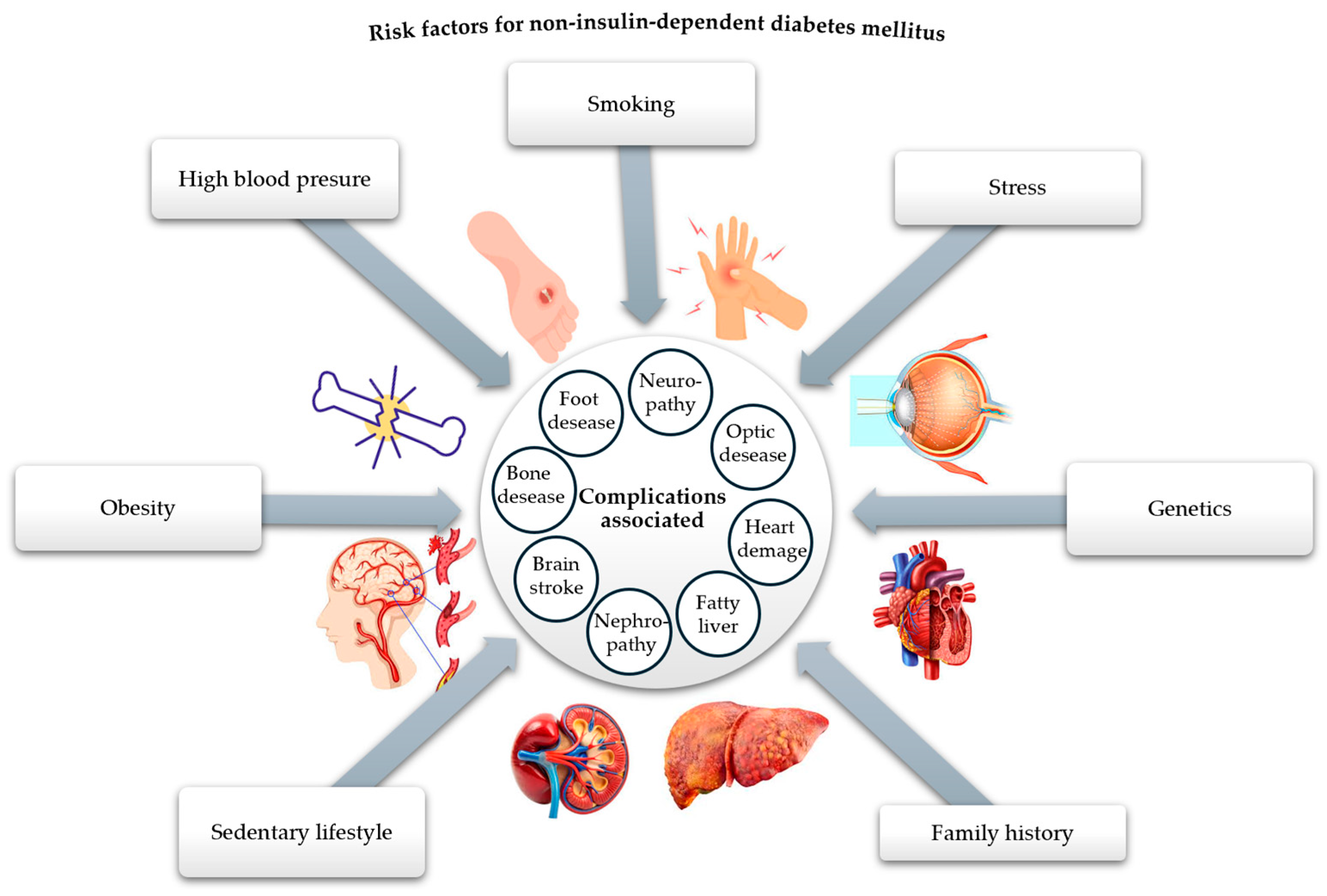
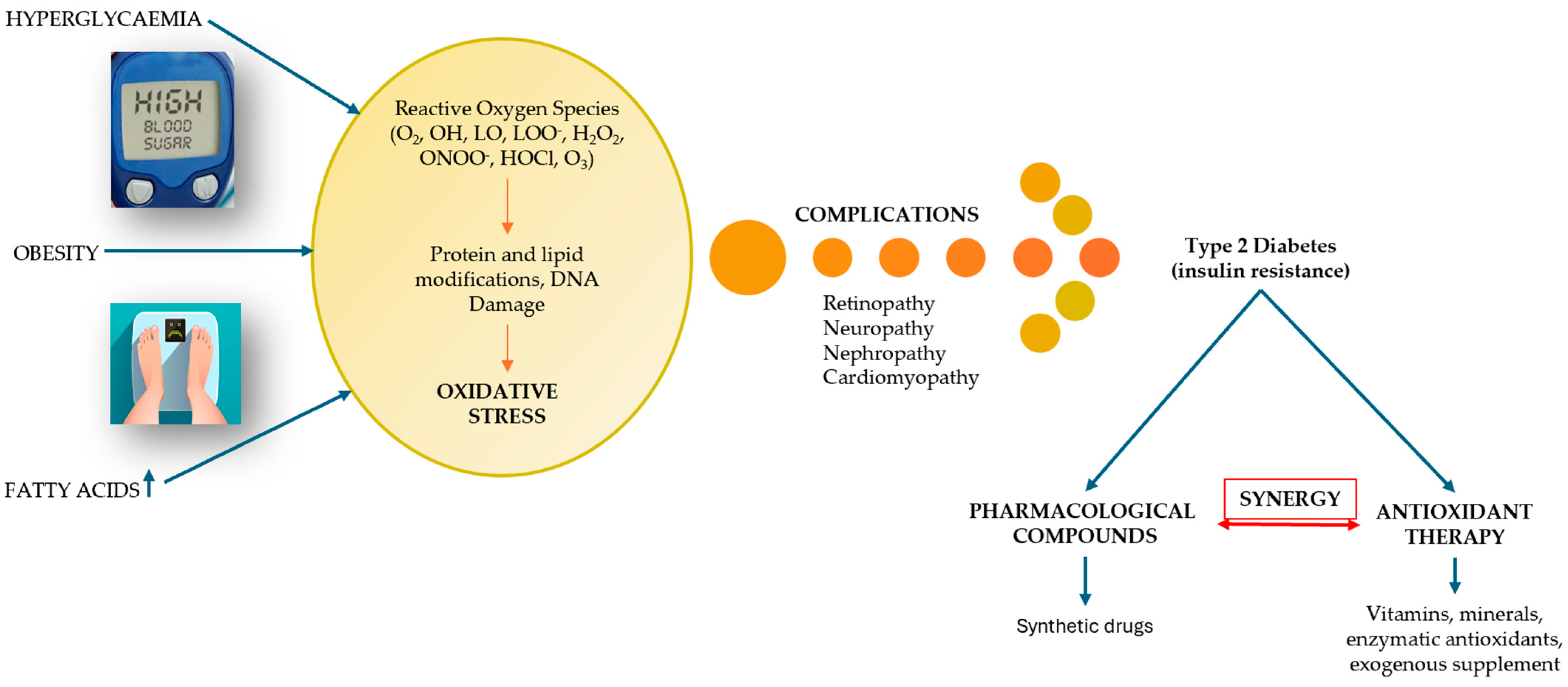

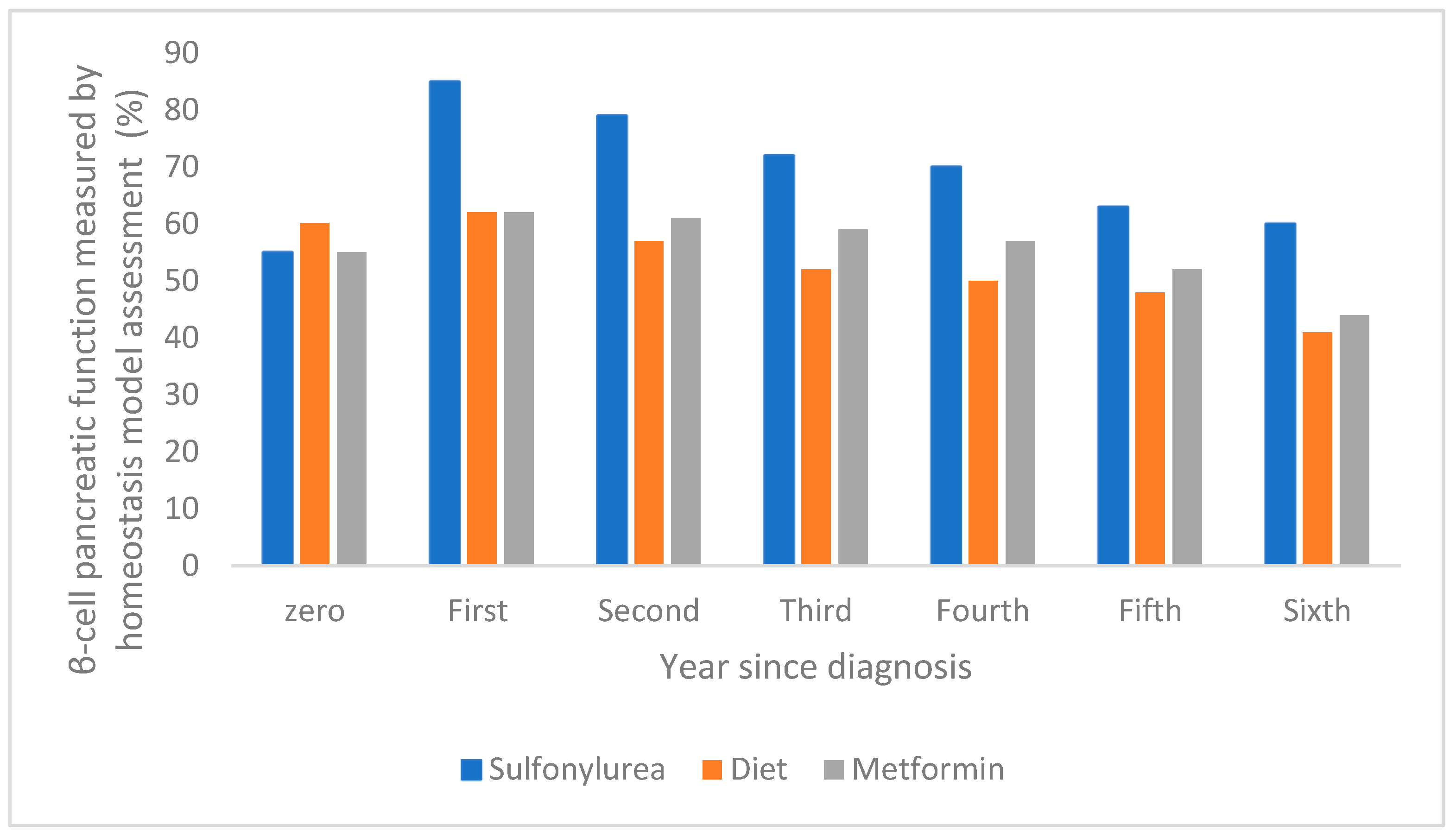
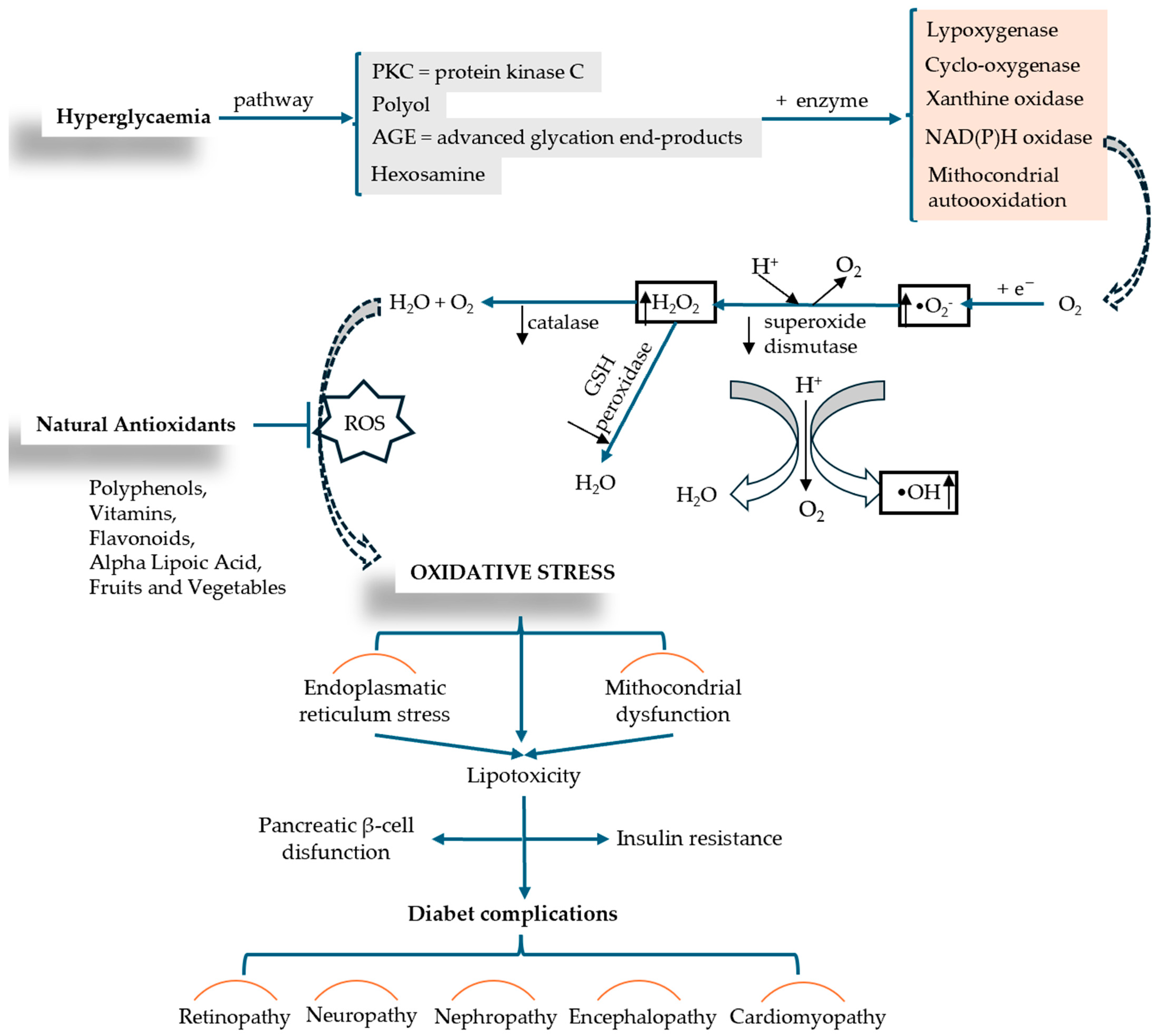
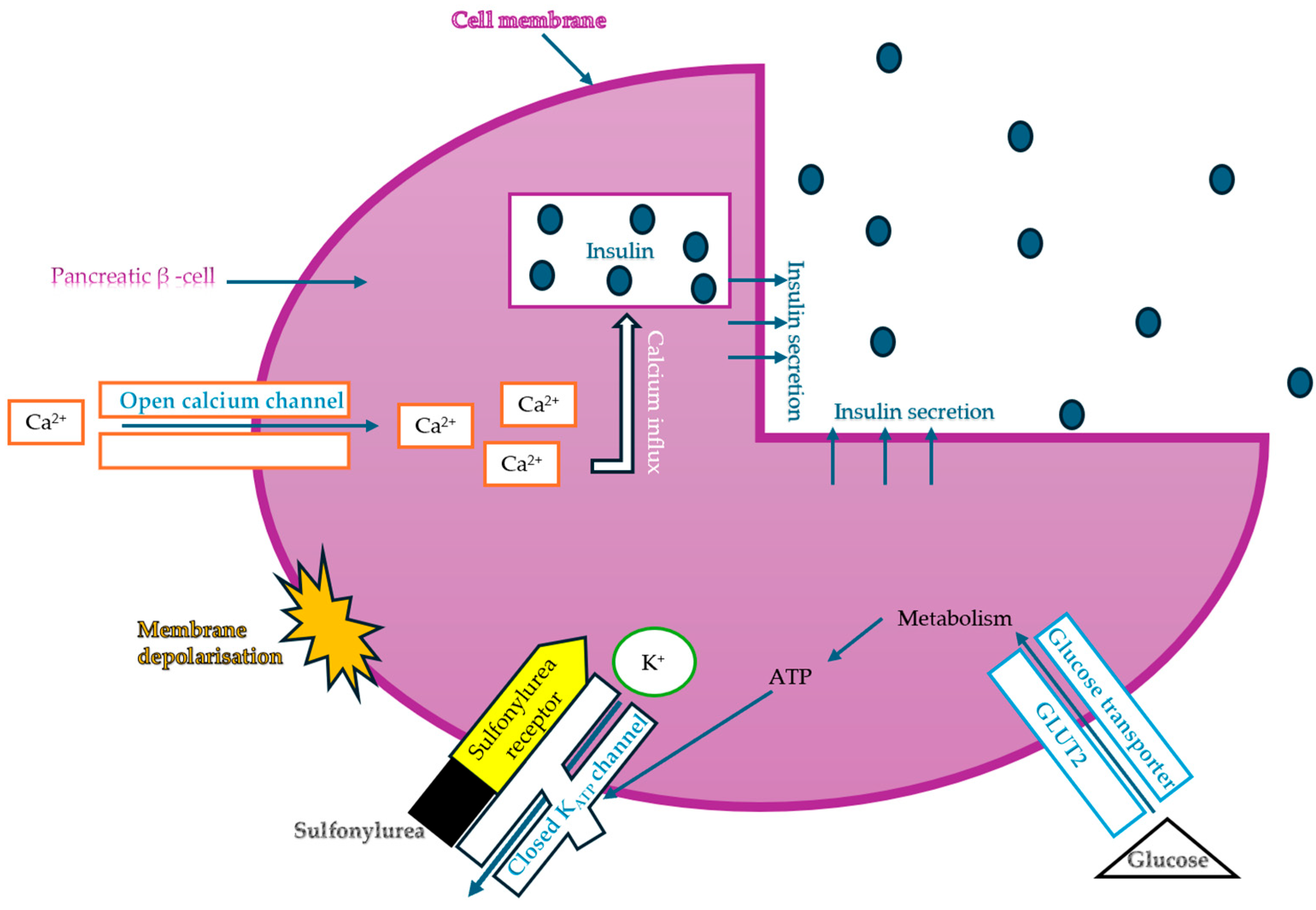
Disclaimer/Publisher’s Note: The statements, opinions and data contained in all publications are solely those of the individual author(s) and contributor(s) and not of MDPI and/or the editor(s). MDPI and/or the editor(s) disclaim responsibility for any injury to people or property resulting from any ideas, methods, instructions or products referred to in the content. |
© 2025 by the authors. Licensee MDPI, Basel, Switzerland. This article is an open access article distributed under the terms and conditions of the Creative Commons Attribution (CC BY) license (https://creativecommons.org/licenses/by/4.0/).
Share and Cite
Dinu, A.; Confederat, L.-G.; Dragostin, I.; Morariu, I.D.; Tutunaru, D.; Dragostin, O.-M. Synergism of Synthetic Sulfonamides and Natural Antioxidants for the Management of Diabetes Mellitus Associated with Oxidative Stress. Curr. Issues Mol. Biol. 2025, 47, 709. https://doi.org/10.3390/cimb47090709
Dinu A, Confederat L-G, Dragostin I, Morariu ID, Tutunaru D, Dragostin O-M. Synergism of Synthetic Sulfonamides and Natural Antioxidants for the Management of Diabetes Mellitus Associated with Oxidative Stress. Current Issues in Molecular Biology. 2025; 47(9):709. https://doi.org/10.3390/cimb47090709
Chicago/Turabian StyleDinu (Iacob), Ancuța, Luminita-Georgeta Confederat, Ionut Dragostin, Ionela Daniela Morariu, Dana Tutunaru, and Oana-Maria Dragostin. 2025. "Synergism of Synthetic Sulfonamides and Natural Antioxidants for the Management of Diabetes Mellitus Associated with Oxidative Stress" Current Issues in Molecular Biology 47, no. 9: 709. https://doi.org/10.3390/cimb47090709
APA StyleDinu, A., Confederat, L.-G., Dragostin, I., Morariu, I. D., Tutunaru, D., & Dragostin, O.-M. (2025). Synergism of Synthetic Sulfonamides and Natural Antioxidants for the Management of Diabetes Mellitus Associated with Oxidative Stress. Current Issues in Molecular Biology, 47(9), 709. https://doi.org/10.3390/cimb47090709







